Ascalapha Odorata, Tatagua o Mariposa Bruja/Ascalapha Odorata, Tatagua or Witch Butterfly (Esp-Eng)
Hola, mis amigos.
Hoy me estreno en esta comunidad. Un saludo afectuoso a todos los miembros y demás hivers que visitan mi blog.
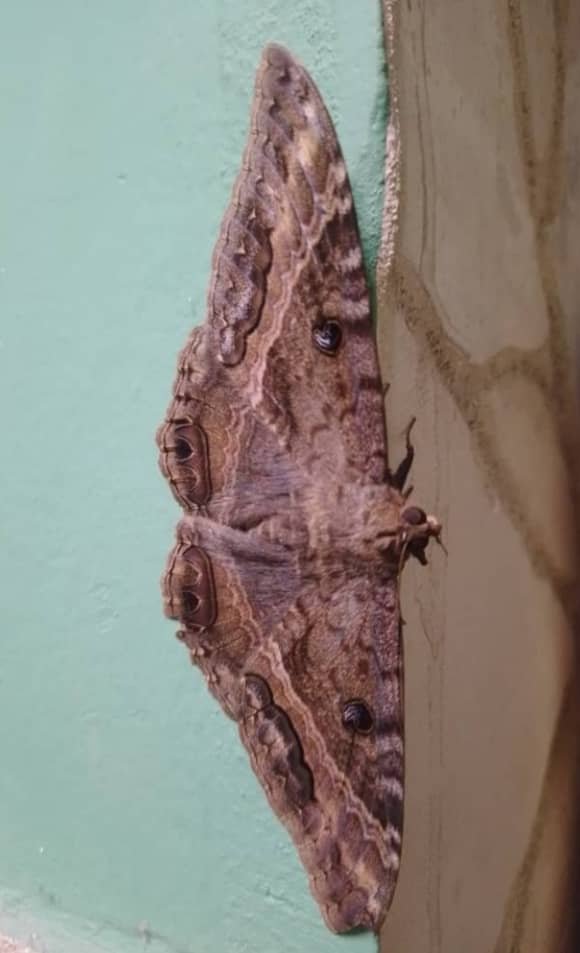
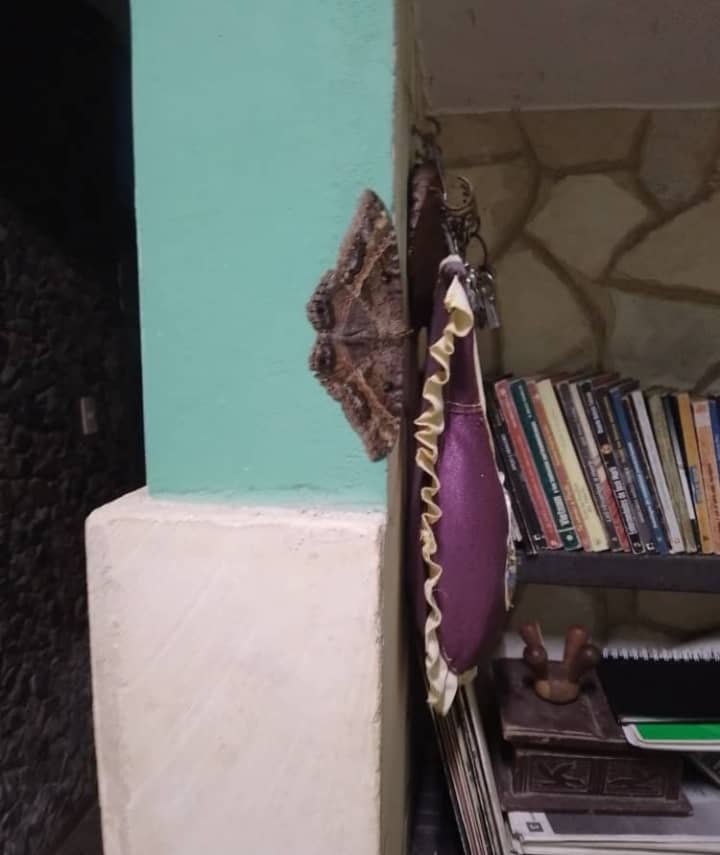
Esta bella mariposa (tatagua que es como la conozco) estuvo rondando dentro de mi casa durante varios días. De inmediato la fotografié y fui a investigar para saber un poco más sobre ella. Entonces supe algunas cosas:
Nombre científico: Ascalapha odorata
Reino: Animalia
Filo: Arthropoda
Clase: Insecta
Orden: Lepidoptera
Familia: Erebidae
Género: Ascalapha
Especie(s): Ascalapha odorata.
Esta preciosidad pasó horas posada muy cerca de unos libros y luego "desapareció", bueno, al menos por dos días hasta que la volví a ver encima de una ventana en la cocina. Allí logré tomar esta singular foto donde el contraste con la luz y el cristal, hacen que su ala parezca un trozo de encaje.
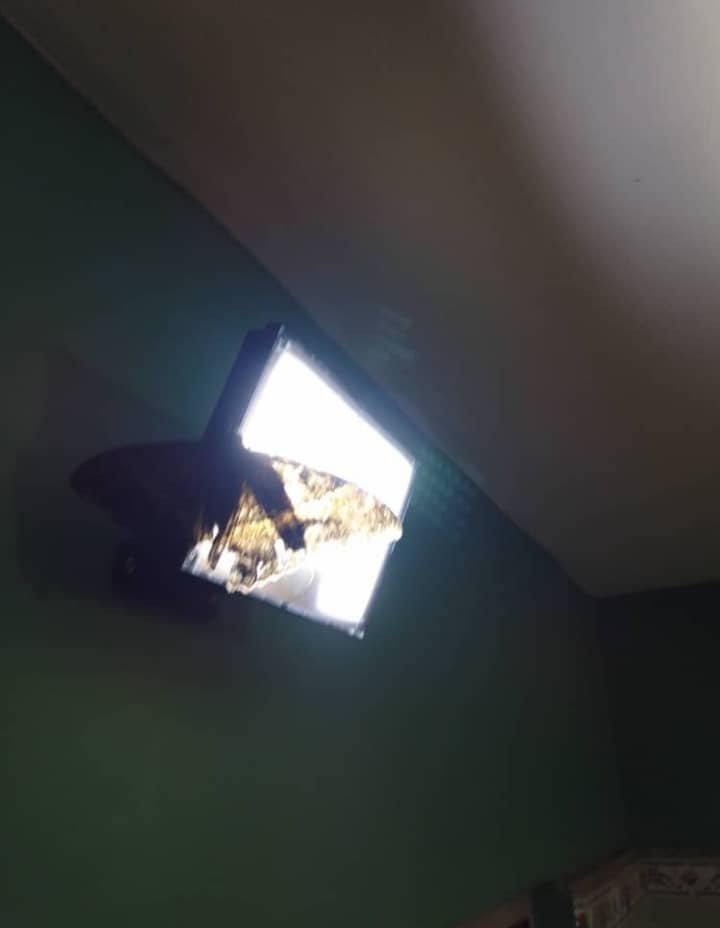
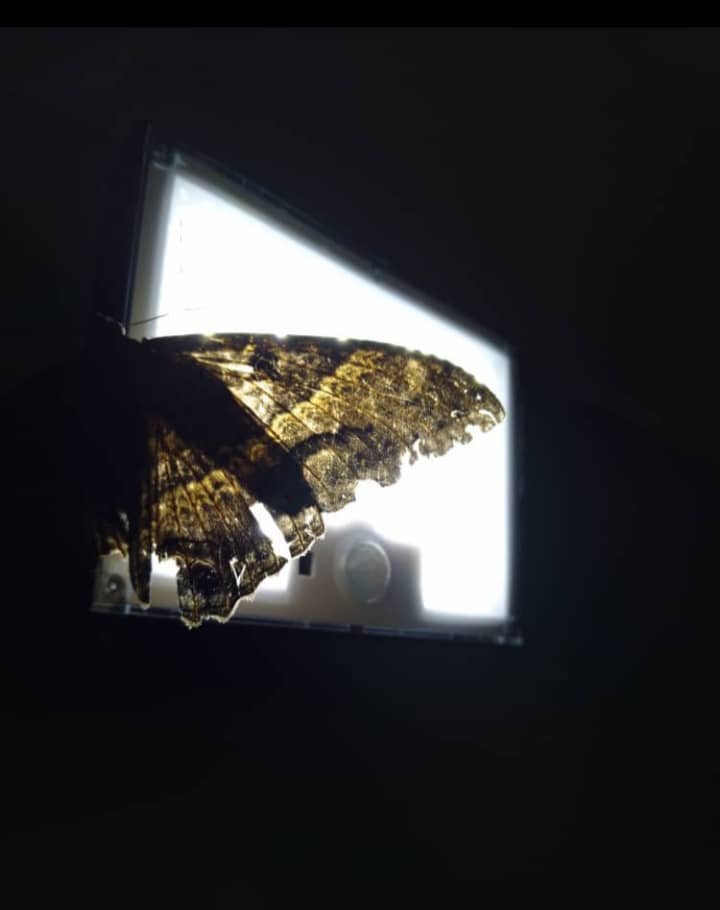
Aquí en Cuba es llamada por dos nombres y eso depende de la zona geográfica. En la parte oriental del país la llaman Tatagua y su presencia se asocia con alguna visita que vendrá. En el Occidente la llaman mariposa Bruja y su presencia se asocia con malos augurios.
Sin embargo, la Ascalapha odorata es inofensiva, a pesar de ser a veces acusada de la ocurrencia de desgracias debido a mitos y leyendas. Esta superstición se ha materializado, lamentablemente, en la muerte de miles de estas mariposas al rededor del mundo.
La Tatagua suele ocultarse en los techos o partes altas de las viviendas para refugiarse de la luz diurna.
Su nombre científico proviene del demonio Ascalaphus, horticultor de Hades, el rey del inframundo en la mitología griega.
No tiene una dieta exclusiva y se alimenta de una gran diversidad de plantas.
Después de haberla visto en la ventana, volvió a "desaparecer". Pasado tres días la encontré nuevamente cerca de los libros.
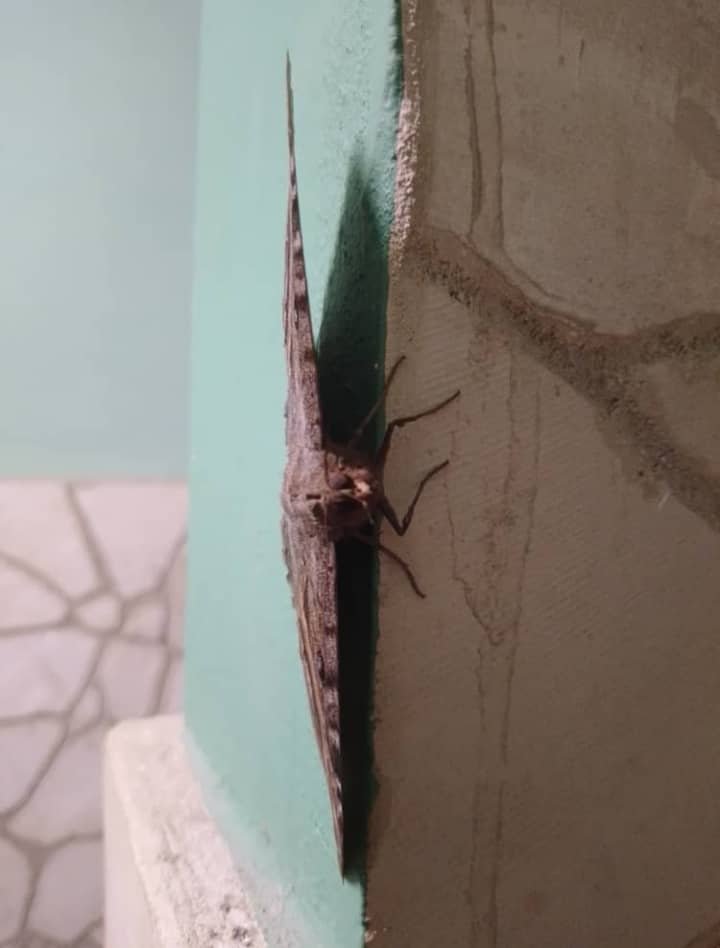
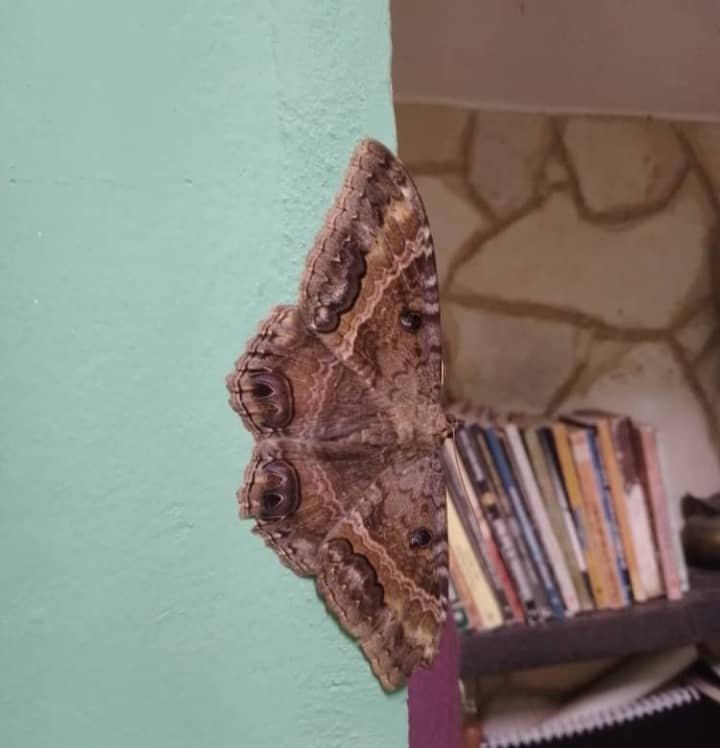
Al parecer era una mariposa "lectora". Allí se quedó hasta el otro día que me di cuenta que, por alguna razón, le faltaban unos pedazo de alas y no se movía.
Entonces descubrí que estaba muerta, que había venido para morir justo encima de una vieja biblia. La tomé y la coloqué en la tierra cerca de una mata de margaritas que tengo en el patio para su descanso final.
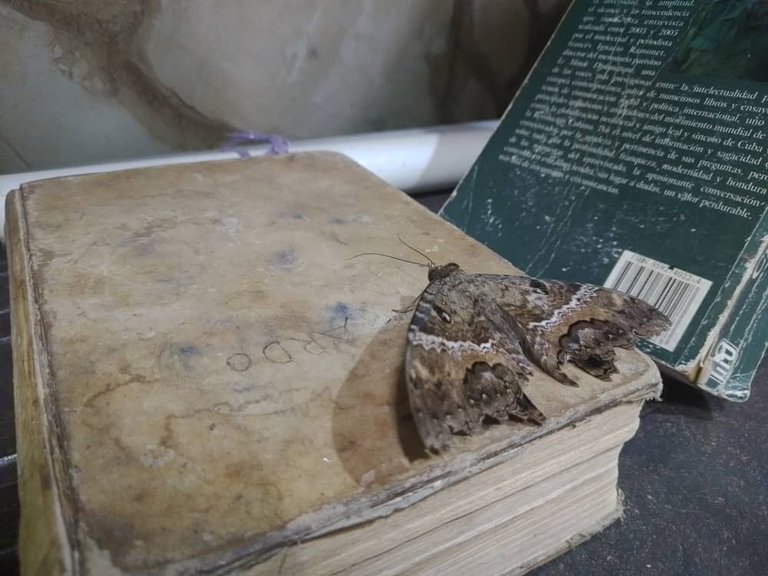
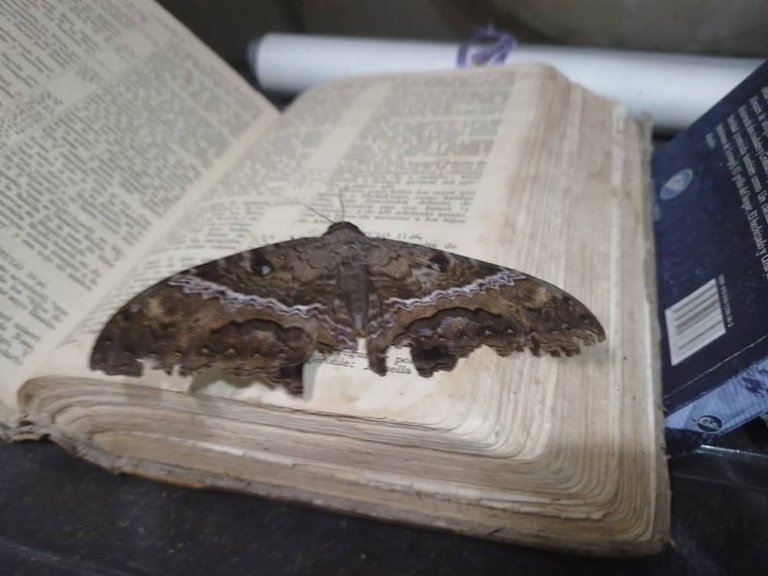
Lo cierto es que disfruté su presencia en mi hogar sin el menor susto, porque para mí, solo era una hermosa visitante.
| Photography | Ascalapha Odorata, Tatagua o Mariposa Bruja |
|---|---|
| Camera | Redmi |
| Model | Teléfono Redmi |
| Editing program | Techno Sparks Photo Editor |
| Photographer | @kpoulout |
| Fecha de observación | 1/8/5 |
| Location | Punta brava, La Habana |


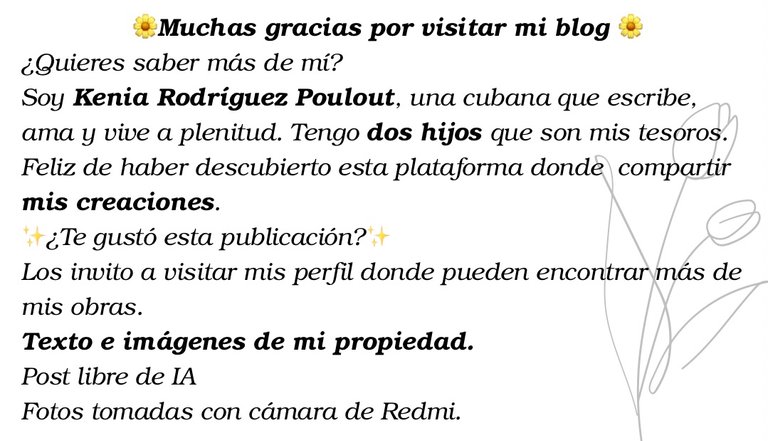


Ascalapha Odorata, Tatagua or Witch Butterfly.
Hello, my friends.
Today I debut in this community. A warm greeting to all members and other hivers who visit my blog.


This beautiful butterfly (tatagua as I know it) was flying around inside my house for several days. Immediately I photographed it and went to investigate to know a little more about it. Then I learned some things:
Scientific name: Ascalapha odorata
Kingdom: Animalia
Phylum: Arthropoda
Class: Insecta
Order: Lepidoptera
Family: Erebidae
Genus: Ascalapha
Species: Ascalapha odorata.
This beauty spent hours perched very close to some books and then "disappeared," well, at least for two days until I saw it again on top of a window in the kitchen. There I managed to take this unique photo where the contrast with the light and the glass makes its wing look like a piece of lace.


Here in Cuba it is called by two names, and that depends on the geographic area. In the eastern part of the country, they call it Tatagua and its presence is associated with a visit that will come. In the West, they call it Witch Butterfly and its presence is associated with bad omens.
However, the Ascalapha odorata is harmless, despite sometimes being accused of the occurrence of misfortunes due to myths and legends. This superstition has materialized, unfortunately, in the death of thousands of these butterflies around the world.
The Tatagua usually hides in roofs or high parts of houses to take shelter from daylight.
Its scientific name comes from the demon Ascalaphus, horticulturist of Hades, the king of the underworld in Greek mythology.
It does not have an exclusive diet and feeds on a great diversity of plants.
After having seen it in the window, it "disappeared" again. After three days I found it again near the books.

 Apparently it was a "reader" butterfly. It stayed there until the next day when I realized that, for some reason, it was missing pieces of its wings and it wasn't moving.
Apparently it was a "reader" butterfly. It stayed there until the next day when I realized that, for some reason, it was missing pieces of its wings and it wasn't moving.
Then I discovered it was dead, that it had come to die right on top of an old bible. I took it and placed it in the soil near a daisy plant I have in the patio for its final rest.


The truth is I enjoyed its presence in my home without the slightest fright, because for me, it was only a beautiful visitor.
| Photography | Ascalapha Odorata, Tatagua or Witch Butterfly |
|---|---|
| Camera | Redmi |
| Model | Redmi Phone |
| diting program | Techno Sparks Photo Editor |
| Photographer | @kpoulout |
| Date of observation | 1/8/25 |
| Location | Punta Brava, La habana, Cuba |



Que interesante, recuerdo que de niños las cazábamos para asustar a las mujeres y niñas.
Lindo post! Salud!
😅💯🌈
Gracias, mi amigo. Abrazo 🤗
Un placer visitarte amiga!
Abrazo.
Decían nuestros abuelos, que cuando una de estas mariposa entraba a nuestra casa, es porque íbamos a recibir una visita especial de alguien 🥰
Eso mismo me enseñaron a mi. Gracias por llegar.🌹
@kpoulout Each post requires you to include the location, date of observation, and your original inaturalist link.
Ok. Thank you so much.🙏
Es culta la mariposa 🦋, quizo leer el libro 📖 ja. Que bonito post 🥰
🤭🤭🤭. Así es. Abrazo 🤗
Me encantan estas mariposas y nos las has presentado con dominio.
Hermosa forma de morir la de tu Tatagua como hermoso también fue el sitio que le escogiste para su descanso final.
Así es, amiga. Abrazo 🤗
Abrazongo 🌻🤗